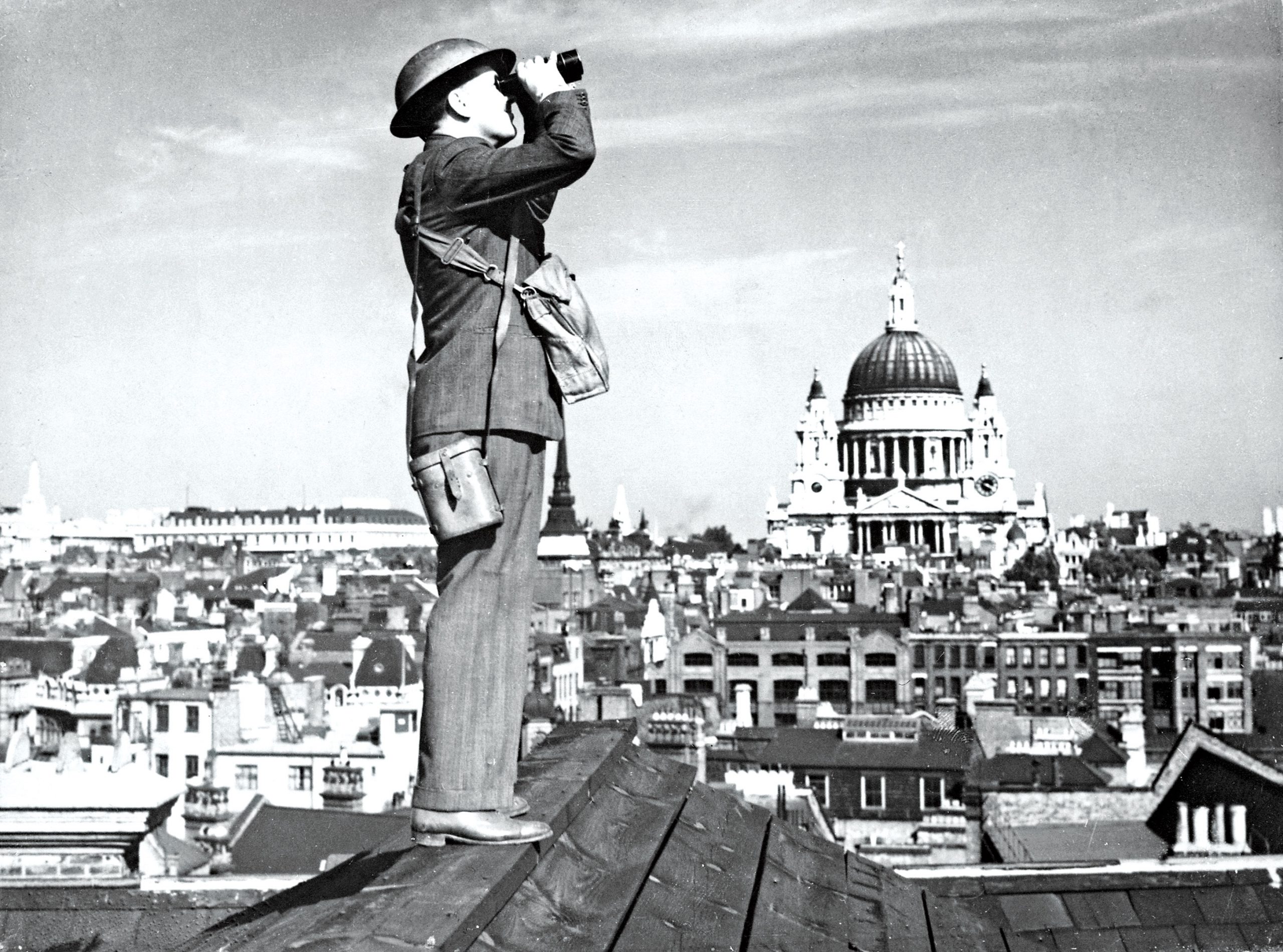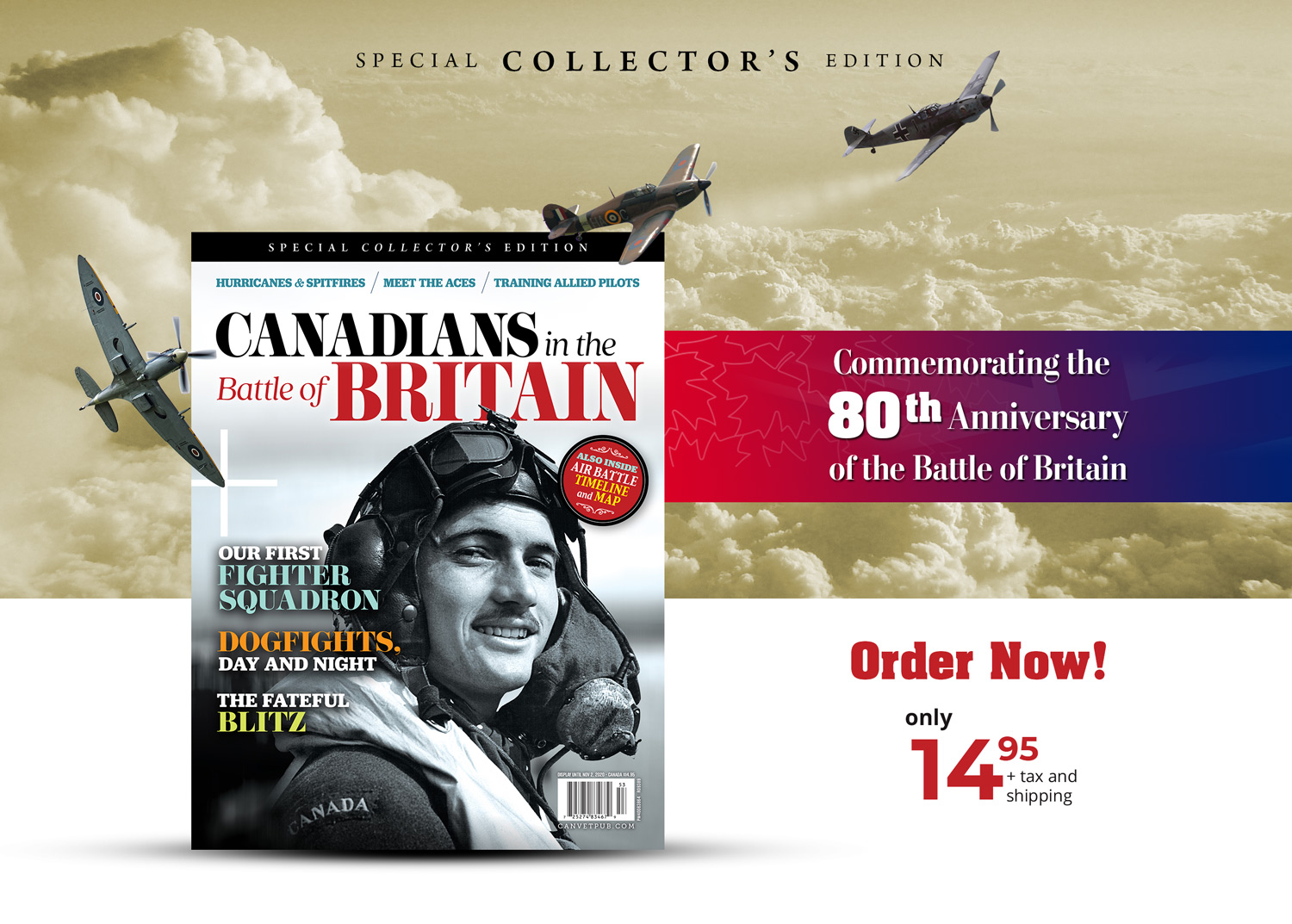
An aircraft spotter from the Observer Corps stands on a rooftop during the Battle of Britain. St. Paul’s Cathedral is in the background. [U.S. National Archives and Records Administration/Wikimedia]
Hitler’s plan was to destroy the Royal Air Force then launch Operation Sea Lion, an invasion of England. Winston Churchill assumed as much.
“Hitler knows that he will have to break us in this island or lose the war,” he told the House of Commons in 1940. “Let us therefore brace ourselves to our duties, and so bear ourselves, that if the British Empire and its Commonwealth last for a thousand years, men will still say: “This was their finest hour.”
The Battle of Britain was a proving ground for Britain’s aerial forces, and it also stirred Churchill to some of his most memorable speeches. On June 4, 1940, he addressed the House, emphasizing how critical the RAF would be in the months ahead. He ended with the famous words: “We shall fight on the beaches, we shall fight on the landing grounds, we shall fight in the fields and in the streets, we shall fight in the hills; we shall never surrender.”
The Battle of Britain began a few weeks later, on July 10, 1940, the first military battle fought entirely in the air. The German aerial assault initially targeted railway hubs and docks on the Thames River in an attempt to cripple the British supply chain. They also targeted RAF airfields in the south of England, hoping to destroy Britain’s critical air defences.
Hitler was opposed to bombing civilian targets, despite advice from the Luftwaffe’s brass that terror bombings would cripple civilian morale. That strategy changed with the attack on London on Sept. 7, which left 1,600 civilians killed or wounded. The London attacks went on for a week, culminating in a massive air battle on Sept. 15, which is now commemorated as Battle of Britain Day.
The sky was dark with aircraft from both sides. McNab counted nine planes falling at once.
The German bombers came in waves over London that day, leaving thousands dead and the city in ruins. Ernest McNab, a Canadian with 1 Squadron, RCAF, was among the pilots who quickly scrambled to their Spitfires and Hurricanes on that day.
“It was a terrific spectacle,” he said. “There were more than 1,000 aircraft in the sky just south of London. So many that there was as much danger of colliding with another fellow as there was of being shot down.”
The German bombers retreated but returned two hours later. The sky was dark with aircraft from both sides. McNab counted nine planes falling at once. The air was thick with parachutes. The furious battle didn’t last long. “After 15 minutes,” said McNab, “there was hardly a plane in the sky—the Germans had run for home.”
By the end of October, the Battle of Britain was over. It claimed the lives of almost 1,542 Allied aircrew, including 23 Canadians. The RAF lost 1,744 aircraft; the Germans lost roughly 1,977. It was Hitler’s first defeat.
After the battle, Churchill delivered this immortal praise for the RAF pilots: “Never in the field of human conflict was so much owed by so many to so few.”
Advertisement






















